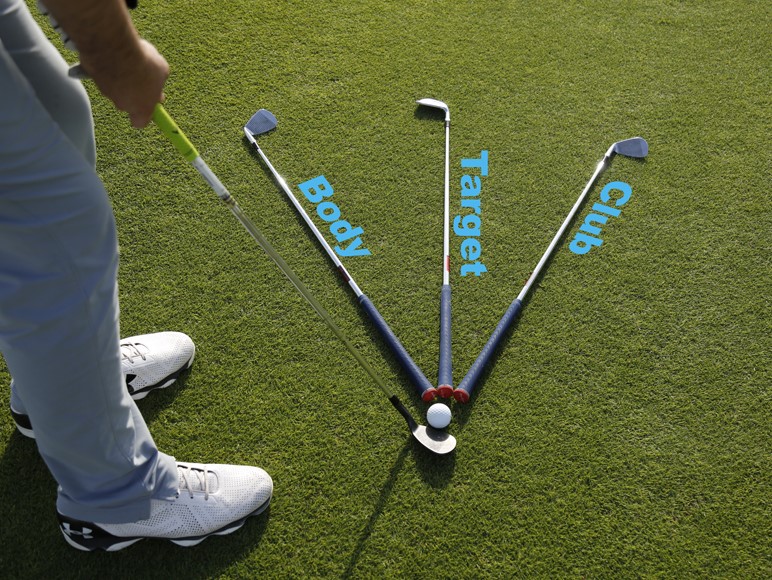The flop shot is one of the most challenging techniques in golf, but also one of the most rewarding when executed correctly. This specialty shot allows the ball to launch high, fly over obstacles, and land softly near the pin with minimal rollout.
To perform it, golfers must use a high-loft wedge, open the clubface, position the ball slightly forward, and align their stance with the swing path. The swing itself should be smooth and relaxed—without forcing the ball forward with excessive power.
However, it is important to remember that the flop shot is not a universal solution. It should only be attempted in specific situations, such as when a large bunker guards the front of the green or when the pin is tucked close to the edge. Confidence, an understanding of course conditions, and regular practice are essential factors that determine success.
When mastered, the flop shot becomes an additional weapon in a golfer’s short-game arsenal. Though used sparingly, the ability to execute this shot can separate experienced players from casual golfers. Combined with sound strategy, a well-played flop shot can save strokes and even secure victory. Here is more explanation from GoGolf.
What Is the Flop Shot in Golf?

Around the green, golfers often face critical decisions regarding which short-game shot to play. The three most common are the chip shot, pitch shot, and flop shot. All share the same purpose—moving the ball closer to the hole—but each produces different trajectories and results.
The flop shot is arguably the most spectacular of the three. It sends the ball soaring almost vertically into the air, before dropping steeply and stopping quickly near the target. It is usually the go-to choice when a hazard—such as a bunker or thick rough—blocks direct access to the green.
Not every golfer can perform a flop shot effectively. Even professionals use it sparingly, only when absolutely necessary, because it is a high-risk, high-reward shot. Poor execution may result in the ball traveling too far, failing to lift, or veering away from the target. But for golfers who have practiced and refined the technique, the flop shot can be a dramatic lifesaver and a game-changer in competitive play.
To use it effectively, a golfer must have confidence, course awareness, and plenty of practice. Below, we break down the technique step by step, followed by key tips and considerations.
Step-by-Step Guide to Hitting a Flop Shot

The flop shot requires precision, finesse, and the right setup. Here are the fundamental steps:
1. Select the Right Club
A lob wedge with at least 60° of loft is ideal for the flop shot. Some players use even higher-lofted wedges for maximum elevation. The loft helps lift the ball steeply, creating the high, soft trajectory that defines the shot.
2. Ball Position
Place the ball slightly forward of center in your stance. If it is too far back, the club’s loft will be reduced, producing a low trajectory instead of a high launch. The forward position ensures the clubface slides under the ball and sends it upward.
3. Open the Clubface
Open the face significantly so that it points skyward, almost as if you were balancing a glass of water on it. This orientation encourages the ball to rise rather than travel forward. Note that opening the face alters aim slightly, so you’ll need to adjust your alignment.
4. Adjust Your Stance
Align your feet, hips, and shoulders along the swing path rather than the target. For right-handed golfers, this typically means aiming slightly left of the pin. The swing then follows your stance line, while the open face adds loft to send the ball high toward the hole.
5. Make a Smooth, Relaxed Swing
The objective is to slide the club under the ball—not to hit hard. Use a full, fluid motion, letting the loft and bounce of the wedge do the work. Avoid manipulating the ball with your hands. Focus on rhythm and tempo, keeping the swing soft but committed.
6. Use Training Aids for Alignment
During practice, place an alignment stick along your stance line and another to represent your target. This visual reference helps you train your body, swing path, and clubface orientation consistently.
If executed properly, the ball will rise steeply, clear any obstacles, and land softly with little roll—an outcome that can transform a tough situation into a scoring opportunity.
Key Considerations for the Flop Shot

Though impressive to watch and satisfying to pull off, the flop shot comes with high risk. Here are the factors to consider before attempting it:
1. Confidence Is Crucial
Flop shots demand full commitment. Any hesitation increases the likelihood of mishits—thin shots that sail over the green or chunked shots that barely move. Attempt this shot only when you feel fully confident in both your technique and the situation.
2. Assess Course Conditions
The lie and turf conditions greatly influence success. A hard, tight lie makes it very difficult to get the club under the ball, while thick rough can snag the clubhead. Ideally, the ball should sit on slightly softer grass, giving the wedge room to slide beneath it. If conditions aren’t right, a pitch or chip shot is safer.
3. Use It as a Specialty Shot
The flop shot should be reserved for emergency or specific scenarios, such as when a bunker or water hazard blocks a direct route, or when the pin is cut tight near the edge of the green. For routine approaches, a chip or pitch is more reliable.
4. Stay Relaxed and Fluid
One of the most common mistakes is making a stiff, forced motion. A flop shot must be free-flowing, allowing the club to glide naturally. Over-controlling the swing with your hands often ruins the shot. Trust your motion and let the club do its job.
5. Practice Different Distances and Tempos
Distance control is the biggest challenge with flop shots. Practice with different swing lengths and speeds to understand how much loft and carry each produces. Experience helps you judge whether a long, smooth swing or a shorter, controlled swing is needed in a given situation.
Final Thoughts
The flop shot is a high-risk, high-reward tool in golf. It requires the right setup, delicate execution, and absolute confidence. While it is not a shot for every situation, mastering it adds a valuable option to your short game—one that can save strokes, rescue pars, and even help secure victory in competitive play.
Like all specialty shots, it requires dedicated practice. By understanding the fundamentals, respecting its difficulty, and rehearsing regularly, you’ll have a spectacular weapon in your golf bag ready for when the course demands it.
[ Follow our social media Account: GoGolf Instagram | GoGolf Facebook | GoGolf X ]











